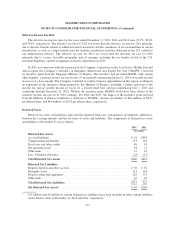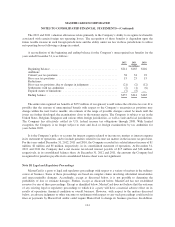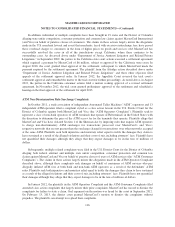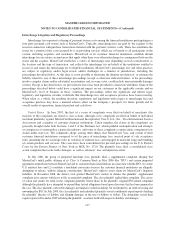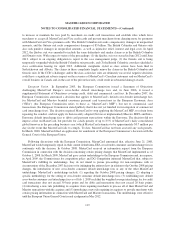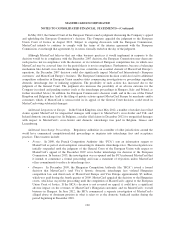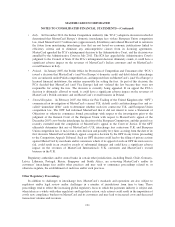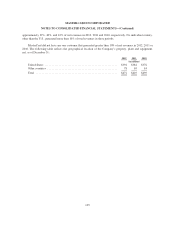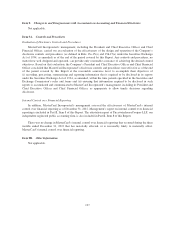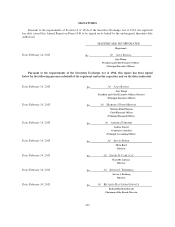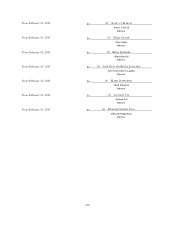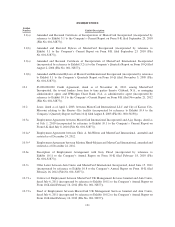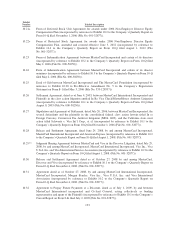MasterCard 2012 Annual Report Download - page 127
Download and view the complete annual report
Please find page 127 of the 2012 MasterCard annual report below. You can navigate through the pages in the report by either clicking on the pages listed below, or by using the keyword search tool below to find specific information within the annual report.MASTERCARD INCORPORATED
NOTES TO CONSOLIDATED FINANCIAL STATEMENTS—(Continued)
Beginning in 2008, many of the Company’s financial institution customers were directly and adversely
impacted by the unprecedented events that occurred in the financial markets around the world. The ongoing
economic turmoil presents increased risk that the Company may have to perform under its settlement and
travelers cheque guarantees. General economic conditions and political conditions in countries in which
MasterCard operates also affect the Company’s settlement risk. For example, the European sovereign debt crisis
introduces a heightened level of risk to the Company. The Company’s aggregate gross settlement exposures to
Greece, Italy, Portugal and Spain, four of the countries significantly impacted by the eurozone crisis, are less
than 5% of MasterCard’s total gross settlement exposure as of December 31, 2012 and are being managed
through various planning and mitigation practices. The Company’s global risk management policies and
procedures are revised and enhanced from time to time. Historically, the Company has experienced a low level of
losses from customer financial institution failures.
MasterCard also provides guarantees to customers and certain other companies indemnifying them from
losses stemming from failures of third parties to perform duties. In addition, the Company enters into business
agreements in the ordinary course of business under which the Company agrees to indemnify third parties against
damages, losses and expenses incurred in connection with legal and other proceedings arising from relationships
or transactions with the Company. Certain indemnifications do not provide a stated maximum exposure. As the
extent of the Company’s obligations under these agreements depends entirely upon the occurrence of future
events, the Company’s potential future liability under these agreements is not determinable. Historically,
payments made by the Company under these types of contractual arrangements have not been material.
Note 20. Foreign Exchange Risk Management
The Company enters into foreign currency forward contracts to manage risk associated with anticipated
receipts and disbursements which are either transacted in a non-functional currency or valued based on a
currency other than its functional currencies. The Company also enters into foreign currency forward contracts to
offset possible changes in value due to foreign exchange fluctuations of assets and liabilities denominated in
currencies other than the functional currency of the entity holding the assets and liabilities. The objective of this
activity is to reduce the Company’s exposure to transaction gains and losses resulting from fluctuations of
foreign currencies against its functional currencies. The notional value of commitments to sell foreign currency
increased to $1.6 billion at December 31, 2012 compared to $279 million at December 31, 2011 due to the
hedging of an increase in assets denominated in a currency other than the functional currency of the entity
holding the assets and an expanded hedging program to offset the Company’s foreign currency exposures arising
from anticipated receipts and disbursements.
The Company does not designate foreign currency derivatives as hedging instruments pursuant to the
accounting guidance for derivative instruments and hedging activities. The Company records the change in the
estimated fair value of the outstanding derivatives at the end of the reporting period to its consolidated balance
sheet and consolidated statement of operations.
123


